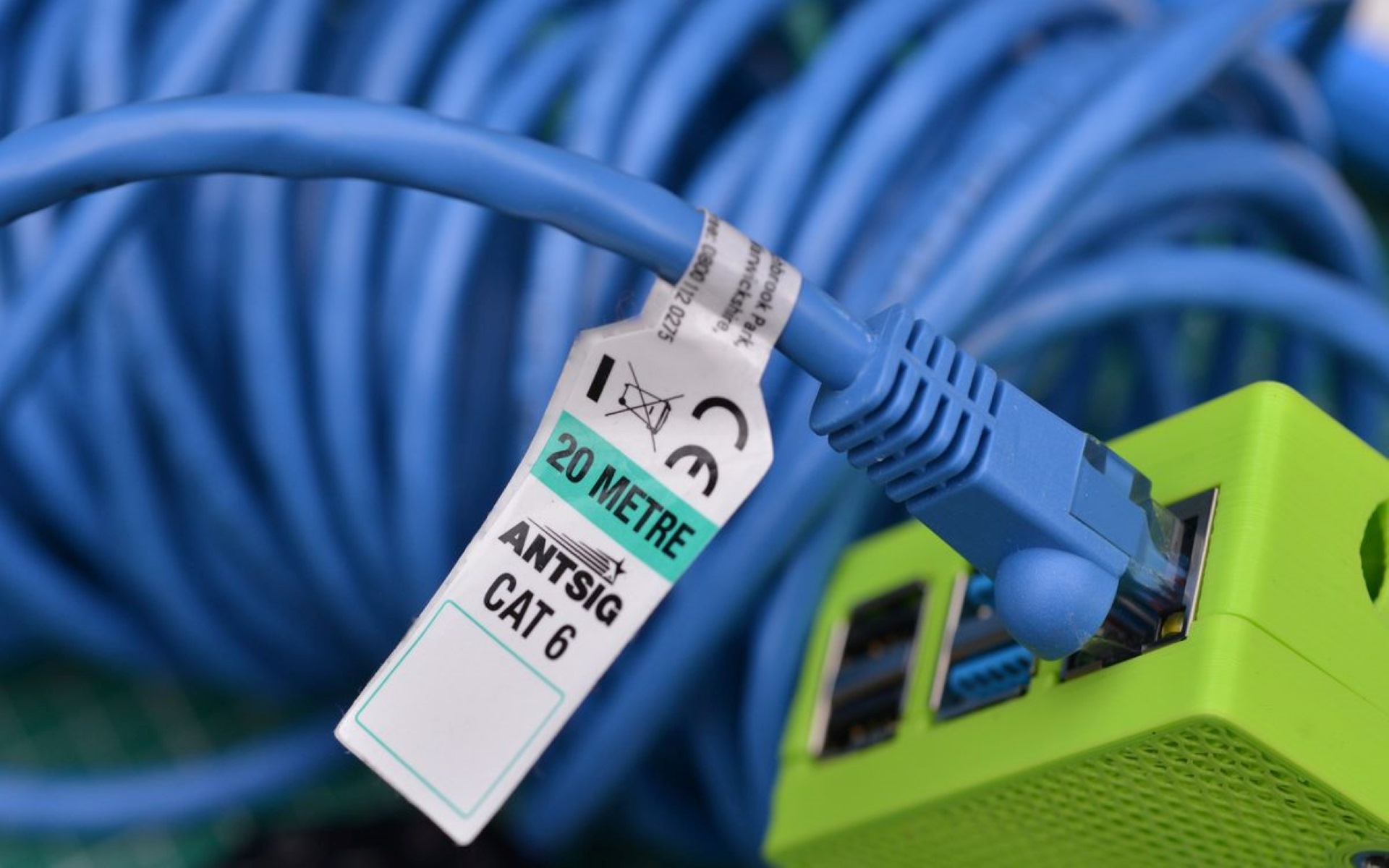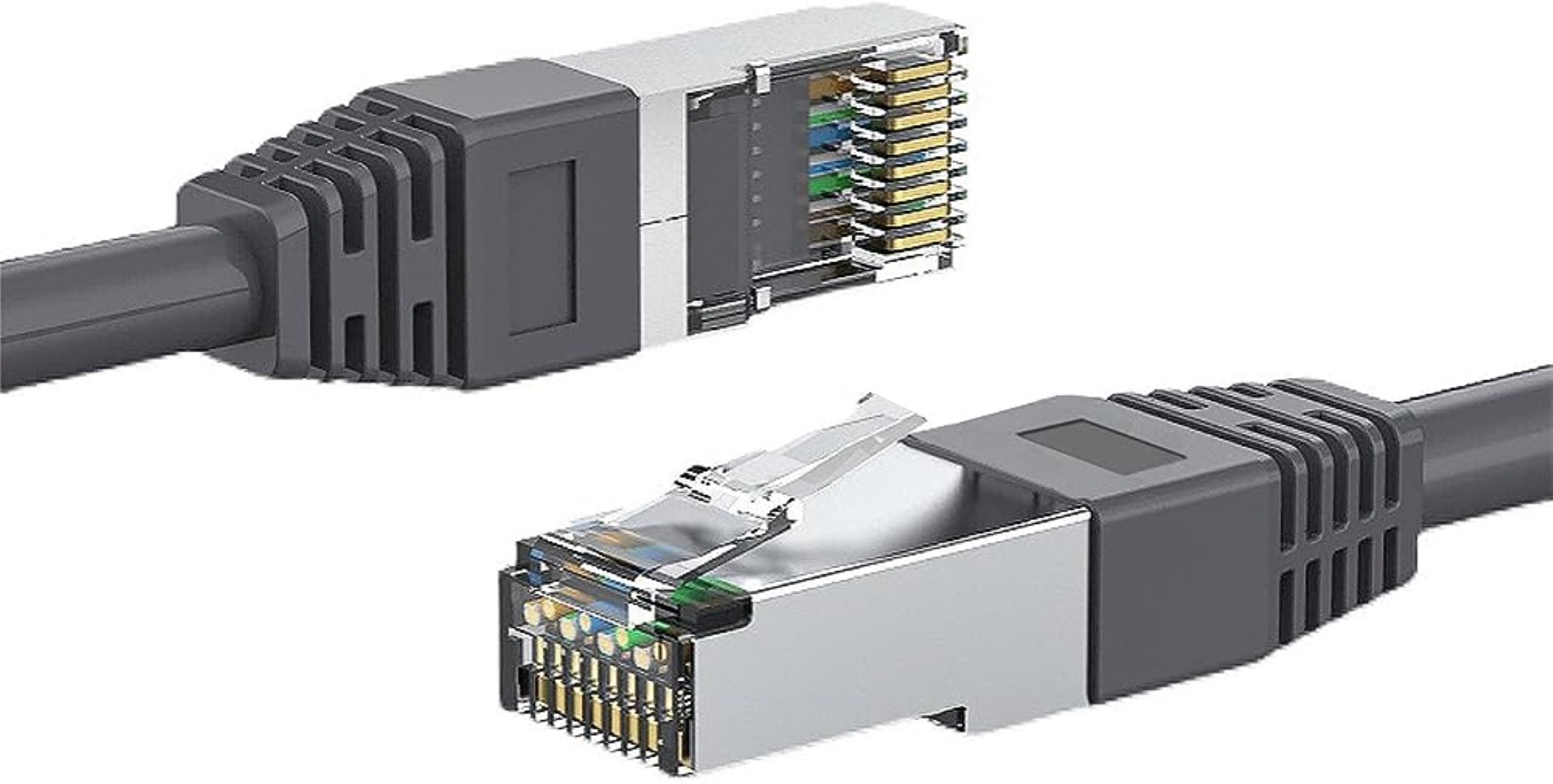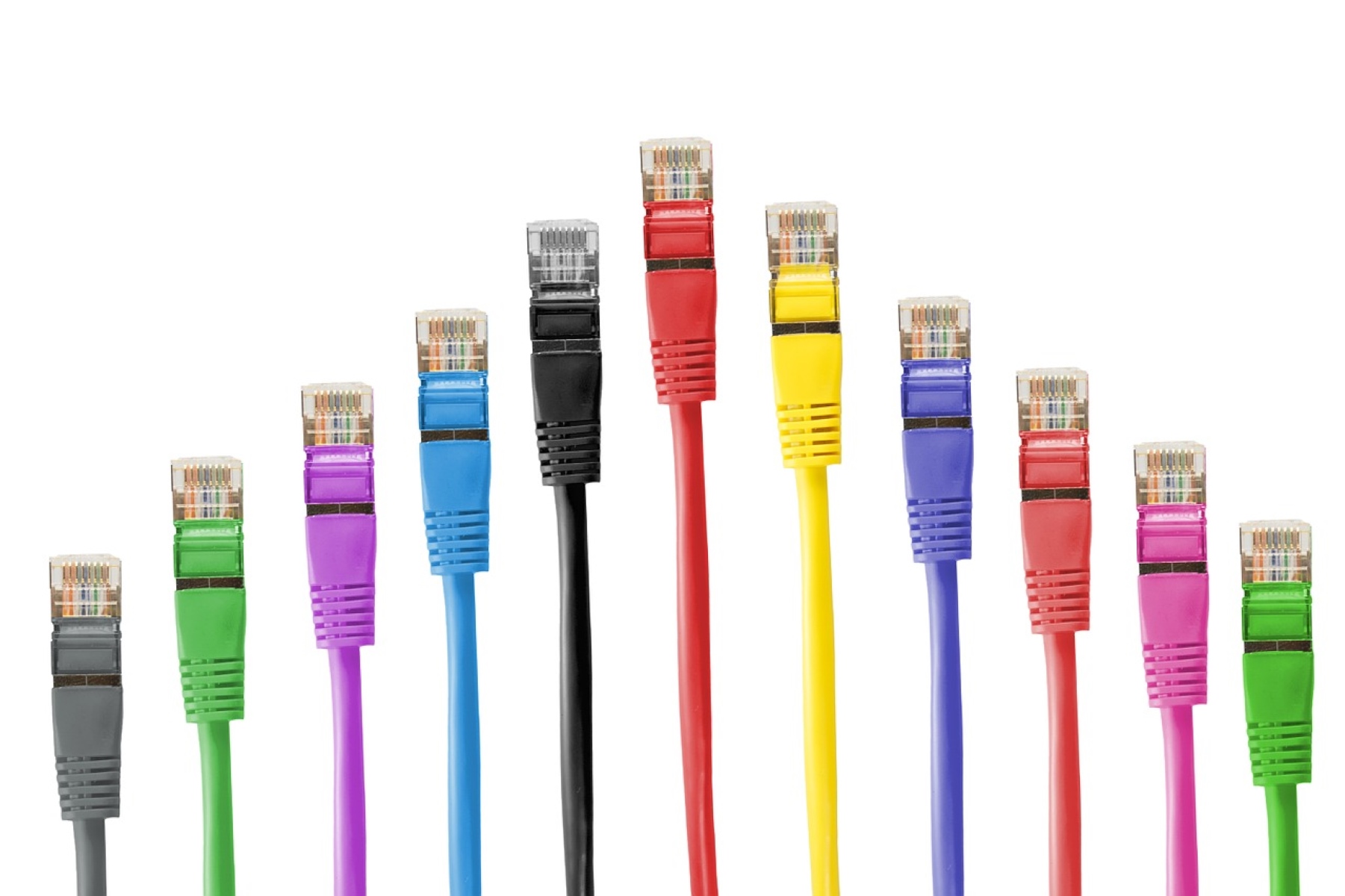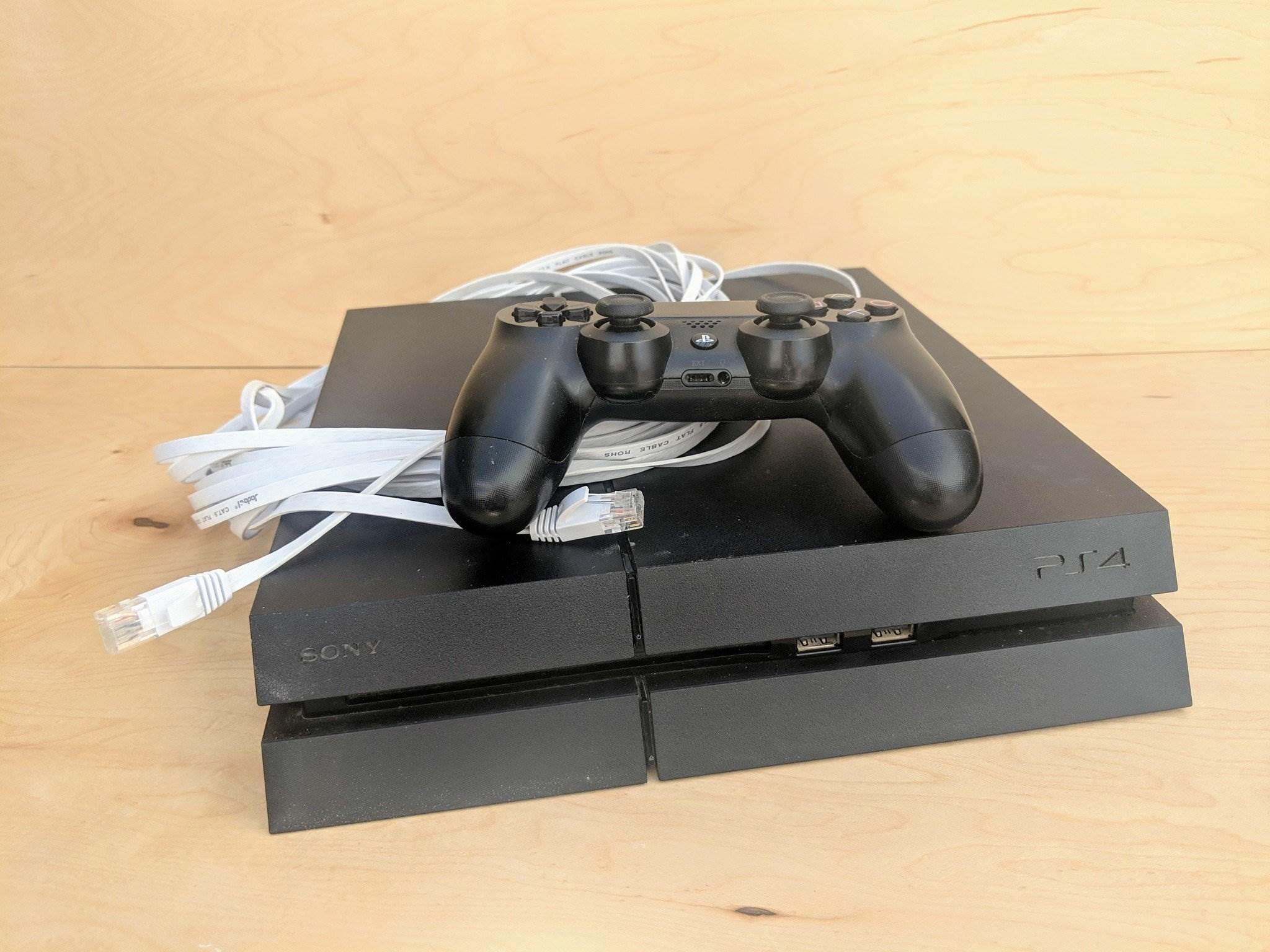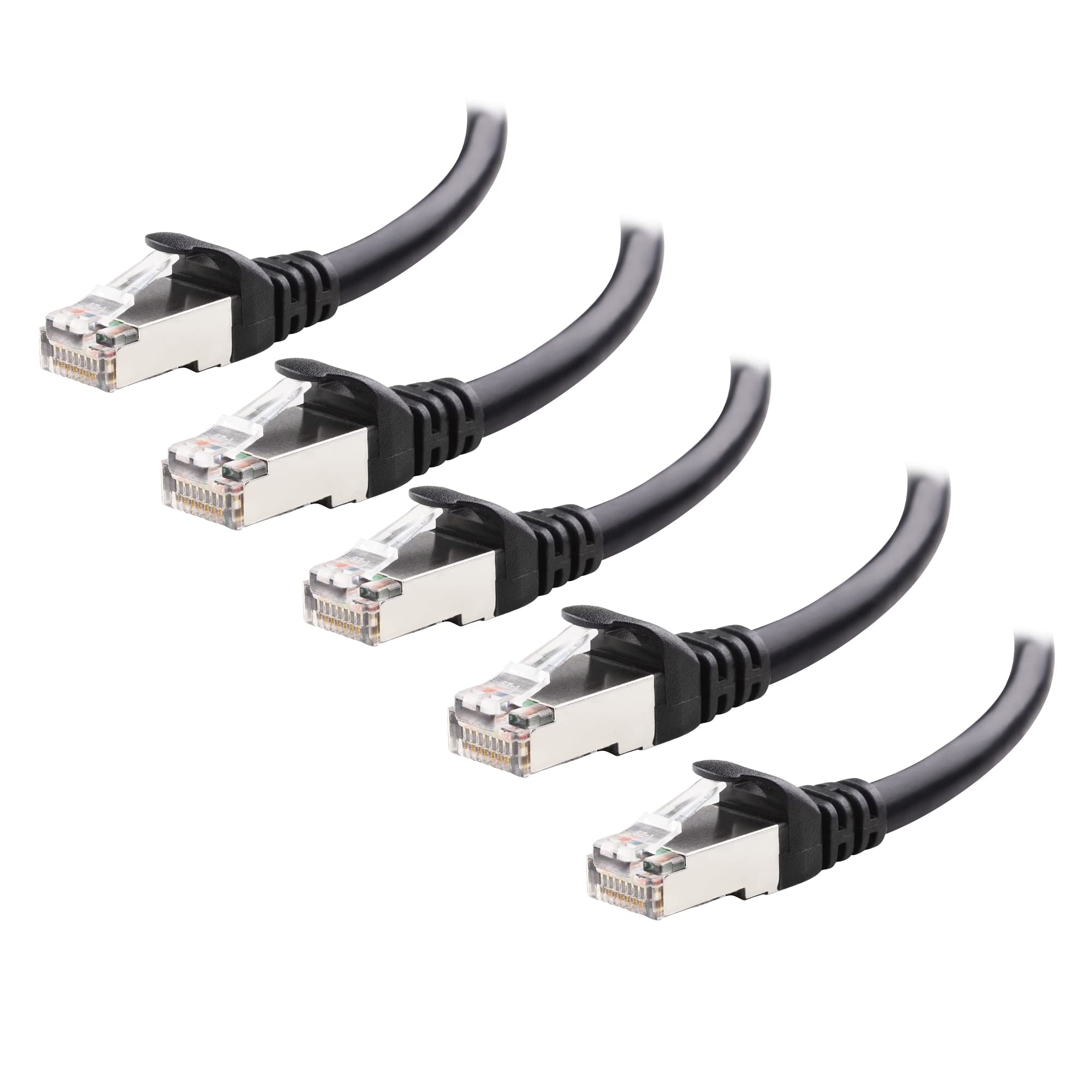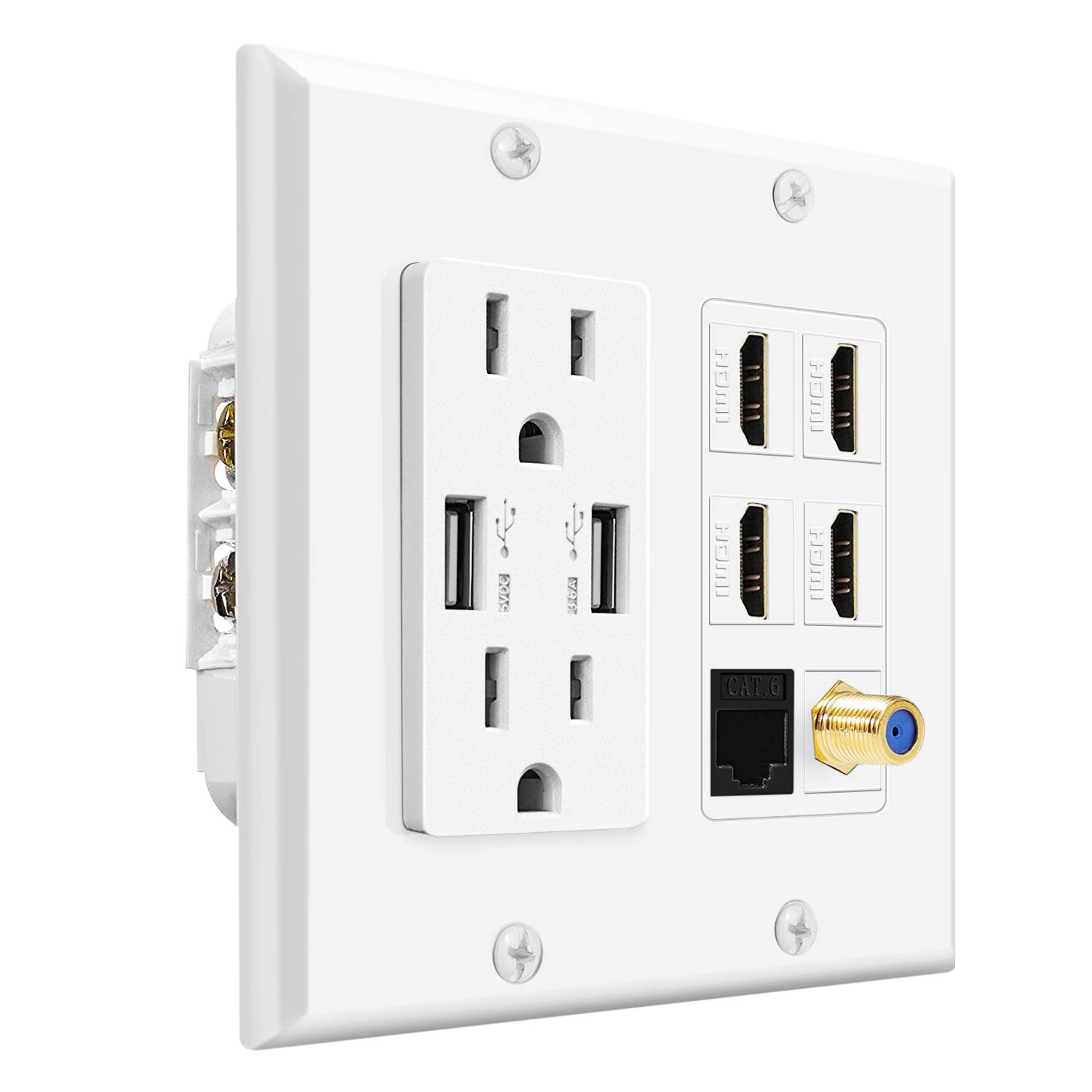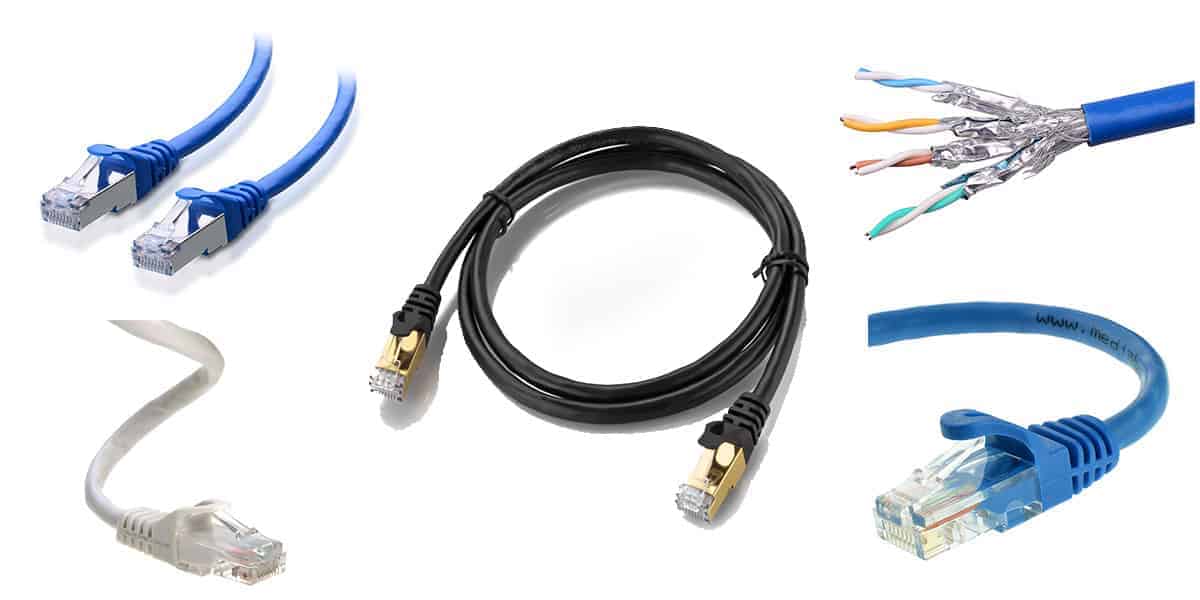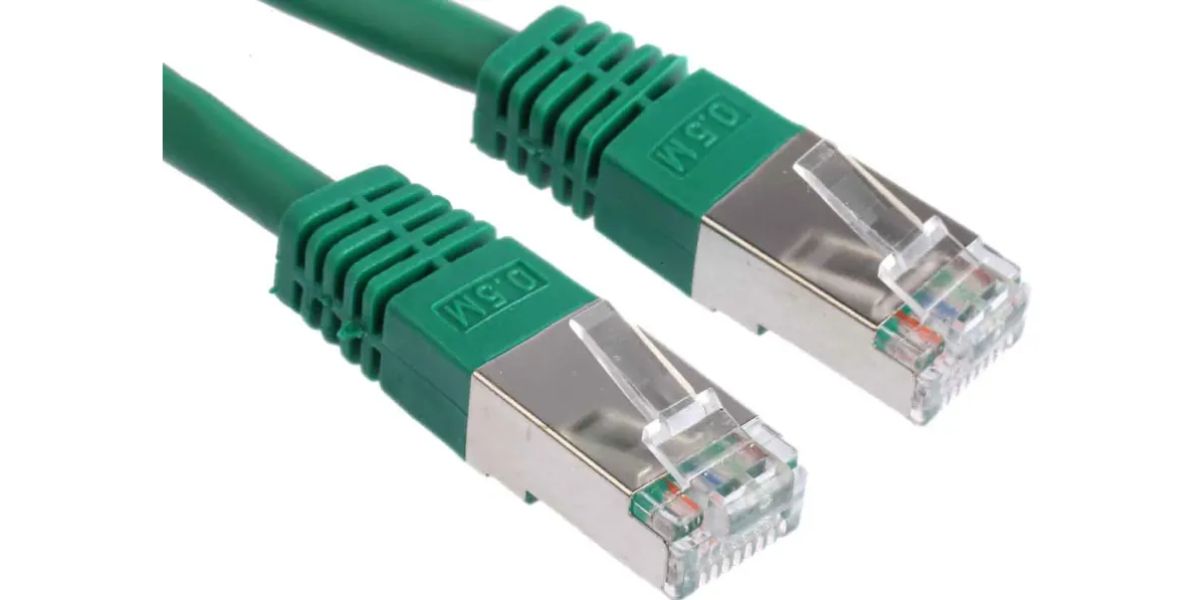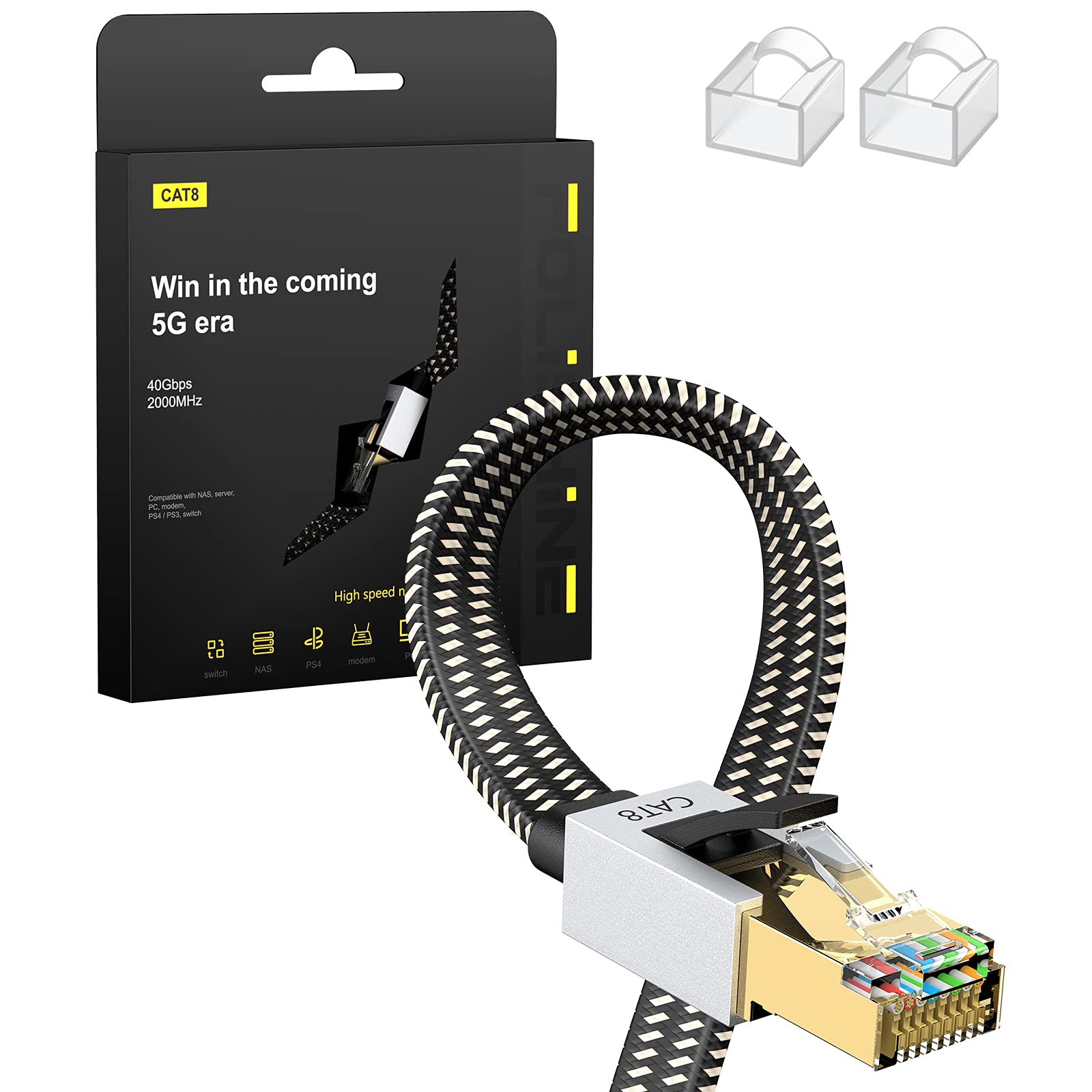Introduction
Welcome to the world of Ethernet cables! In today’s digital age, where connectivity is crucial, Ethernet cables play a vital role in establishing a reliable and high-speed Internet connection. Whether you are setting up a home network or a large-scale office infrastructure, understanding the different types of Ethernet cables is essential to ensure optimal performance.
Ethernet cables are the backbone of wired connections, allowing devices to communicate with each other and access the Internet. They transmit digital data signals between computers, routers, switches, and other networking equipment. With the evolution of technology, various types of Ethernet cables have emerged, each offering different speeds and capabilities.
One of the most popular and widely used Ethernet cables is the Cat6 cable. Known for its improved performance and reliability, Cat6 cables have become the go-to choice for many professionals and enthusiasts. In this article, we will delve into the world of Cat6 Ethernet cables, exploring their benefits, applications, and how they compare to other types of Ethernet cables.
What is an Ethernet Cable?
An Ethernet cable, also known as a network cable or LAN cable, is a type of cable that is used to connect devices within a local area network (LAN). It provides a wired connection between devices such as computers, routers, switches, and modems, allowing them to share data and access the internet.
Ethernet cables are designed to transmit data using Ethernet protocols, which define the rules and procedures for the transmission of digital information. These cables consist of twisted pairs of copper wires that are encased in a plastic sheath. The twisted pair design helps to minimize electromagnetic interference (EMI) and ensure reliable data transmission.
Ethernet cables come in different categories, such as Cat5, Cat6, and Cat7, each offering varying speeds and performance capabilities. The category represents the cable’s specifications, including the maximum bandwidth, transmission speed, and overall performance.
Unlike wireless connections, Ethernet cables provide a more stable and secure connection. They are not susceptible to interference from other devices or obstacles like walls, making them ideal for situations where reliability is crucial, such as gaming, streaming, and data-intensive tasks.
Ethernet cables use a standardized connector called an RJ-45 connector, which resembles a larger version of a telephone connector (RJ-11). This connector has eight pins and is compatible with most Ethernet ports found on computers, routers, and other networking devices.
In summary, Ethernet cables are essential components for establishing wired connections in a local area network. They offer reliable and high-speed data transmission, making them a preferred choice for various applications that require stable and secure connections.
Different Types of Ethernet Cables
Ethernet cables come in various categories, each offering different speeds, performance, and capabilities. Let’s explore some of the most common types of Ethernet cables:
- Cat5: Cat5 cables were one of the earliest types of Ethernet cables and are still in use today. They are capable of transmitting data at speeds of up to 100 Mbps (megabits per second) and are suitable for basic internet browsing and small-scale networks. Cat5 cables are known for their affordability and flexibility.
- Cat5e: The “e” in Cat5e stands for enhanced, and these cables offer improved performance compared to traditional Cat5 cables. They can support speeds of up to 1000 Mbps (1 Gbps) and have better resistance to crosstalk (interference between wires). Cat5e cables are commonly used in home networks, small offices, and for VoIP (Voice over Internet Protocol) applications.
- Cat6: Cat6 cables are an upgrade over Cat5e cables, providing faster speeds and improved performance. They can support data transfer rates of up to 10 Gbps over shorter distances (up to 55 meters) and 1 Gbps over longer distances. Cat6 cables are widely used in environments where high-speed data transmission is required, such as in large businesses, data centers, and multimedia applications.
- Cat6a: Cat6a cables are an enhanced version of Cat6 cables that offer even higher performance. They can support data transfer rates of up to 10 Gbps over longer distances (up to 100 meters). Cat6a cables are ideal for applications that demand superior performance and reliability, such as professional audio and video streaming, high-speed data transfer, and IP surveillance.
- Cat7: Cat7 cables are the latest and fastest Ethernet cables available. They are designed to support data transfer rates of up to 10 Gbps over longer distances (up to 100 meters). Cat7 cables feature shielding to minimize signal interference and are suitable for critical applications that require high-speed and reliable connections, such as large-scale enterprises and data-intensive environments.
Choosing the right type of Ethernet cable depends on your specific requirements. If you’re unsure, Cat6 cables are a versatile option that offer a good balance between speed, performance, and affordability. However, for more demanding applications, such as professional multimedia or enterprise-level networking, Cat6a or Cat7 cables might be the better choice.
What is Cat6 Ethernet Cable?
Cat6 Ethernet cable, also known as Category 6 cable, is an upgraded version of the Cat5e cable and is widely regarded as the industry standard for high-speed Ethernet connections. It offers improved performance and bandwidth capabilities, making it ideal for demanding network applications and environments.
The “Cat6” in Cat6 Ethernet cable stands for Category 6, which indicates that it meets specific performance standards set by the Telecommunications Industry Association (TIA). These standards ensure that the cable can support data transfer rates of up to 10 Gigabits per second (10 Gbps) over short distances, typically up to 55 meters.
Cat6 cables feature four twisted pairs of copper wires, just like Cat5e cables, but with stricter specifications for reducing crosstalk (interference between wires). This improvement in crosstalk resistance allows Cat6 cables to deliver faster and more reliable data transmission, especially in environments with multiple cables in close proximity.
The physical design of Cat6 Ethernet cable is also optimized for performance. It typically has a thicker gauge and better shielding than Cat5e cables, which helps to minimize signal degradation and interference, resulting in more stable and high-quality connections.
Cat6 Ethernet cables are backward compatible, meaning they can be used with devices or networks that support lower categories, such as Cat5e or Cat5. However, to take full advantage of the enhanced performance of Cat6 cables, it is recommended to use them with compatible devices and equipment.
The benefits of Cat6 Ethernet cables make them an excellent choice for various applications. They are particularly beneficial for scenarios that require high-speed data transmission, such as video streaming, online gaming, large file transfers, and data-intensive tasks. Cat6 cables also provide future-proofing, as they support emerging technologies and higher bandwidth requirements.
In summary, Cat6 Ethernet cable is a high-performance networking cable that offers faster data transmission, improved crosstalk resistance, and enhanced overall performance compared to Cat5e. It is a reliable and cost-effective solution for both residential and commercial networking environments, providing the necessary bandwidth and reliability for demanding applications.
Benefits of Cat6 Ethernet Cable
Cat6 Ethernet cable offers numerous benefits over its predecessors, making it a popular choice for high-speed network connections. Let’s explore some of the key advantages of Cat6 Ethernet cable:
- Higher Speeds: One of the primary benefits of Cat6 cable is its ability to support faster data transfer rates. With a maximum speed of 10 Gigabits per second (10 Gbps), Cat6 cable provides a significant increase in bandwidth compared to lower category cables. This makes it ideal for bandwidth-intensive activities such as online gaming, video streaming, and large file transfers.
- Improved Performance: Cat6 cables are designed with stricter specifications for reducing crosstalk and signal interference. This results in improved performance and reliability, as the cables can transmit data more accurately and with fewer errors. The enhanced performance of Cat6 cables ensures a stable and consistent connection, minimizing disruptions and latency issues.
- Better Crosstalk Resistance: Cat6 cables are engineered to have better crosstalk resistance than Cat5e cables. This means that Cat6 cables experience less interference from neighboring cables, allowing for cleaner and more reliable signal transmission. The reduced crosstalk ensures that data integrity is maintained, even in environments with high cable density.
- Future-proofing: Cat6 cables are designed to meet the current and future demands of high-speed networking. As technology continues to evolve and bandwidth requirements increase, Cat6 cables provide a level of future-proofing. Investing in Cat6 cables now ensures compatibility with emerging technologies and equipment, saving time and money in the long run.
- Longer Transmission Distances: Cat6 cables can transmit data over longer distances compared to lower category cables. While maintaining the maximum speed of 10 Gbps over shorter distances, Cat6 cables can still support 1 Gbps over longer distances, up to 55 meters. This makes Cat6 cables suitable for larger homes, offices, and commercial spaces, where longer cable runs are required.
In addition to these advantages, Cat6 Ethernet cables are also backward compatible with lower category cables, such as Cat5e or Cat5. This means that Cat6 cables can be used in networks where older cables are already installed, providing a seamless upgrade path for enhanced performance.
In summary, Cat6 Ethernet cable offers higher speeds, improved performance, and better crosstalk resistance compared to lower category cables. With its ability to support faster data transfer rates and longer transmission distances, Cat6 cables are a reliable and future-proof solution for demanding network applications.
How Does Cat6 Ethernet Cable Compare to Other Ethernet Cables?
Cat6 Ethernet cable is a significant upgrade over its predecessors, such as Cat5e and Cat5, offering improved performance and capabilities. Let’s compare Cat6 cable to other Ethernet cables to understand the differences and benefits:
- Cat5: Cat6 Ethernet cable is superior to Cat5 in terms of speed and performance. While Cat5 cables can support data transfer rates up to 100 Mbps (megabits per second), Cat6 cables can handle speeds of up to 10 Gbps (gigabits per second). This substantial increase in bandwidth makes Cat6 cables a better choice for bandwidth-intensive tasks such as streaming high-definition videos or online gaming.
- Cat5e: Cat6 and Cat5e cables are often compared since Cat5e is an enhanced version of Cat5. While Cat5e cables can support speeds of up to 1 Gbps (almost 10 times faster than Cat5), Cat6 cables offer even higher speeds of up to 10 Gbps. Cat6 cables also have better crosstalk resistance, ensuring more reliable and consistent connections in environments with multiple cables.
- Cat6a: Cat6a is an improved version of Cat6 cable and offers similar capabilities. However, Cat6a cables can support data transfer rates of up to 10 Gbps over longer distances (up to 100 meters), while Cat6 cables are typically limited to 55 meters at this speed. Cat6a cables also have better shielding, reducing interference and improving signal quality. Cat6a cables are recommended for professional audio and video applications or large-scale commercial networks.
- Cat7: Cat7 cable is the highest category of Ethernet cable available. It offers the same data transfer rates as Cat6a (up to 10 Gbps), but with even better overall performance. Cat7 cables feature enhanced shielding to minimize electromagnetic interference and offer improved data integrity and reliability. They are typically used in demanding environments where uninterrupted and high-speed connections are crucial, such as data centers or industrial settings.
In comparison to these other Ethernet cables, Cat6 Ethernet cable strikes a balance between performance, cost, and versatility. It offers substantially faster speeds and better crosstalk resistance than Cat5 and Cat5e cables, making it a suitable choice for most residential and commercial networking needs.
When considering an Ethernet cable, it’s important to make a choice that aligns with your specific requirements. Cat6 Ethernet cable provides a significant improvement in performance over its predecessors, making it an excellent choice for high-speed data transmission and reliable network connections in a variety of applications.
Uses and Applications of Cat6 Ethernet Cable
Cat6 Ethernet cable finds extensive use in a wide range of applications that require high-speed and reliable network connections. Let’s explore some of the common uses and applications of Cat6 cables:
- Residential Networking: Cat6 cables are commonly used in homes to establish wired connections for internet access, streaming media, online gaming, and file sharing. With their ability to support faster data transfer speeds, Cat6 cables ensure a stable and lag-free experience for households with multiple devices and bandwidth-intensive activities.
- Small Office/Home Office (SOHO) Networks: Cat6 cables are ideal for small businesses or home offices that require reliable and efficient networking. They provide the necessary bandwidth for tasks such as video conferencing, cloud-based applications, and data transfers. Cat6 cables enable seamless communication and collaboration, enhancing productivity and efficiency.
- Enterprise Networking: Cat6 cables are widely used in large-scale enterprise networks that require high-speed data transmission and reliable connectivity. They are suitable for connecting servers, switches, routers, and other networking equipment. Cat6 cables ensure fast and secure data transfer, essential for critical business operations and resource-intensive applications.
- Data Centers: In data center environments where speed and reliability are paramount, Cat6 cables play a crucial role. They are used to connect servers, storage devices, networking equipment, and other components within the data center infrastructure. Cat6 cables enable efficient data transfer, support higher bandwidth applications, and contribute to the overall performance and stability of the data center.
- Audio and Video Streaming: Cat6 cables are commonly used in applications that involve professional audio and video streaming. They facilitate the transmission of high-quality audio and video signals with minimal signal loss and interference. Cat6 cables provide the necessary bandwidth and stability required for broadcasting, live events, video production, and multimedia applications.
The versatility and capabilities of Cat6 Ethernet cables make them suitable for a wide range of other applications as well, including IP surveillance systems, educational institutions, healthcare facilities, retail establishments, and industrial environments. Cat6 cables offer reliable and high-speed connections, meeting the demands of today’s technology-driven world.
In summary, Cat6 Ethernet cables have diverse uses and applications across various sectors. From residential networking to enterprise environments, Cat6 cables provide the necessary bandwidth, performance, and reliability for a wide range of tasks, including internet access, streaming, file sharing, video conferencing, data transfers, and professional audio/video applications.
Installation and Maintenance of Cat6 Ethernet Cable
Proper installation and maintenance of Cat6 Ethernet cables are crucial to ensure optimal performance and longevity. Here are some key considerations for the installation and maintenance of Cat6 cables:
- Quality Cables and Components: Choose high-quality Cat6 cables from reputable manufacturers to ensure reliable performance. It is essential to use certified Cat6 cables and compatible connectors, patch panels, and networking equipment to maintain the integrity of the network signal.
- Proper Cable Routing: During installation, ensure that Cat6 cables are properly routed and organized to avoid tangles and excessive bending. Maintain sufficient clearance from power cables, fluorescent lights, and other sources of electrical interference. Avoid sharp bends or kinking of the cables, as this can cause signal degradation.
- Terminate Cables Correctly: Use proper termination techniques when connecting Cat6 cables to RJ-45 connectors or patch panels. Ensure that the cables are properly stripped and inserted into the connectors following the TIA/EIA-568-B standard. Inspect and test the connections to verify that they are secure and stable.
- Avoid Cable Length Limitations: Cat6 cables have an optimal maximum length of 55 meters for 10 Gbps speeds. To achieve maximum performance, keep cable runs within this recommended length. If longer distances are required, consider using Cat6a or Cat7 cables, which can support higher speeds over longer distances.
- Maintain Cable Integrity: Regularly inspect Cat6 cables for any signs of damage or wear. Protect the cables from physical damage, moisture, and extreme temperatures. Be mindful of cable management to avoid accidental cable pulls or stress on the connectors. Protect exposed cables with cable channels or conduit where necessary.
- Regular Testing and Troubleshooting: Perform periodic testing and troubleshooting of the Cat6 cable installations to identify any potential issues. Use cable testers to verify the connectivity and performance of the cables. This helps detect any faults, such as short circuits, open circuits, or excessive crosstalk, and allows for timely repairs or replacements.
- Stay Up-to-date with Standards: Keep abreast of the latest industry standards and best practices for Ethernet cable installations and maintenance. Stay informed about advancements in cable technology, as newer standards may provide even better performance and future-proofing for your network infrastructure.
By following these installation and maintenance practices, you can ensure that your Cat6 Ethernet cables deliver reliable and high-speed network connectivity. Proper installation and ongoing maintenance contribute to the longevity and performance of your network infrastructure, providing a stable and efficient network environment.
Conclusion
Cat6 Ethernet cable has revolutionized wired network connections by offering faster speeds, improved performance, and enhanced reliability. It has become the preferred choice for various applications that demand high-speed data transmission and stable network connections.
With its ability to support data transfer rates of up to 10 Gbps and reduced crosstalk interference, Cat6 cable has become the go-to option for residential, commercial, and industrial networking needs. It provides a significant upgrade over its predecessors, such as Cat5 and Cat5e, delivering faster speeds and better performance in a wide range of applications.
The benefits of Cat6 Ethernet cable, including higher speeds, improved crosstalk resistance, and longer transmission distances, make it a versatile solution for a variety of networking scenarios. Whether you’re setting up a home network, a small business, or a large enterprise, Cat6 cable provides the necessary bandwidth and reliability to meet your networking requirements.
Proper installation and maintenance of Cat6 cables are essential to ensure optimal performance. Use high-quality cables and components, employ proper cable routing techniques, and follow recommended termination practices. Regularly inspect and test the cables to identify and resolve any potential issues that may arise.
Cat6 Ethernet cable represents the foundation of modern wired networking, connecting devices and enabling seamless communication in our increasingly interconnected world. Its high-speed capabilities and reliability make it indispensable for applications such as streaming media, gaming, file sharing, enterprise networking, and professional audio/video production.
In conclusion, Cat6 Ethernet cable is a significant advancement in network connectivity, offering faster speeds, improved performance, and enhanced reliability. Whether for home use, small businesses, or large-scale enterprises, Cat6 cable provides the necessary bandwidth and stability for a wide range of network applications, establishing connections that keep us connected and thriving in the digital age.







